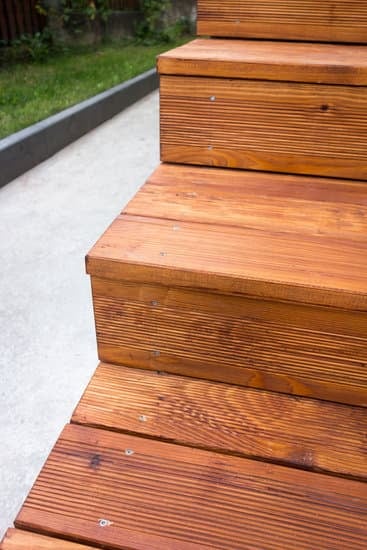The medical records department plays a crucial role in the overall care and management of patients in nursing homes. Efficient and accurate documentation of patient information is vital for providing quality healthcare and ensuring patient safety. In this article, we will explore various strategies to improve the medical records department in nursing homes, ultimately enhancing patient care and operational efficiency.
An efficient medical records department is essential because it facilitates effective communication among healthcare professionals, ensures continuity of care, and enables timely access to critical patient data. It serves as a repository of comprehensive medical information, including diagnoses, treatment plans, medications, and test results, enabling healthcare providers to make informed decisions regarding patient care.
However, many medical records departments in nursing homes face numerous challenges that hinder their ability to achieve optimal efficiency. Outdated technology systems make it difficult to access and update patient records quickly. Lack of standardized processes leads to inconsistencies in data entry and retrieval methods. Limited staff resources result in delays in processing requests for medical records.
To address these challenges effectively, nursing homes need to adopt electronic health record (EHR) systems. Transitioning from paper-based records to EHR offers several benefits, such as improved accessibility to patient information from anywhere within the facility or remotely if needed. EHRs also enhance efficiency by reducing paperwork and automating routine tasks like medication ordering or appointment scheduling. Additionally, EHRs ensure better accuracy through standardized templates and reduce the risk of lost or misplaced records.
Understanding the Challenges
Outdated Technology
One of the common challenges faced by medical records departments in nursing homes is outdated technology. Many nursing homes still rely on paper-based systems or outdated electronic health record (EHR) systems that do not meet the current needs of the facility.
These old systems often lack important features such as integration with other departments, data analytics capabilities, and user-friendly interfaces. As a result, staff members may find it difficult to access and update patient records efficiently, leading to delays in care and potential errors.
To address this challenge, nursing homes should invest in updating their technology infrastructure and implementing modern EHR systems that are tailored to their specific needs. Upgrading to a user-friendly and efficient EHR system can streamline workflow processes, improve accessibility of medical records, and enhance overall operational efficiency. By embracing newer technology solutions, nursing homes can ensure that their medical records department has the necessary tools to provide high-quality care to residents.
Lack of Standardized Processes
Another challenge faced by medical records departments in nursing homes is the lack of standardized processes. Inconsistencies in documentation practices can lead to confusion, errors, and incomplete or inaccurate medical records. Without standardized processes in place, it becomes difficult for staff members to locate specific information within a resident’s medical record or ensure that all relevant data is captured.
To overcome this challenge, nursing homes should establish clear guidelines and protocols for documentation within the medical records department. This includes creating standardized forms and templates for different types of documentation, implementing consistent data entry practices across all staff members, and regularly reviewing and updating documentation guidelines as needed. Standardizing processes will enhance efficiency within the department while ensuring that accurate and comprehensive information is consistently recorded.
Limited Staff Resources
Limited staff resources present another significant challenge for medical records departments in nursing homes. Many facilities struggle with inadequate staffing levels or insufficient training for existing staff members. This can lead to delays in processing and maintaining medical records, as well as errors in data entry or record management.
To address this challenge, nursing homes should prioritize allocating sufficient staff resources to the medical records department. This may involve hiring additional personnel, providing ongoing training opportunities for existing staff members, and implementing a workload management system to optimize efficiency. By ensuring that there are enough skilled and trained staff members dedicated to the medical records department, nursing homes can better meet the demands of managing patient records effectively.
By recognizing these common challenges and proactively addressing them, nursing homes can significantly improve their medical records departments. Implementing modern technology solutions, standardizing processes, and dedicating adequate staffing resources are crucial steps towards enhancing patient care and overall operational efficiency in nursing home settings.
Implementing Electronic Health Records (EHR) Systems
- Implementing Electronic Health Records (EHR) Systems: Discussing the benefits of transitioning from paper-based records to electronic health records, including improved accessibility, efficiency, and accuracy.
Transitioning from paper-based medical records to electronic health records (EHR) systems is a crucial step in improving the medical records department in nursing homes. EHR systems provide numerous benefits that can enhance patient care and overall operational efficiency.
- Improved Accessibility: One significant advantage of EHR systems is the improved accessibility of patient information. With electronic records, healthcare professionals can easily access patient data from any location with secure login credentials. This accessibility allows for faster decision-making and better coordination of care between different departments in nursing homes.
- Enhanced Efficiency: Another benefit of implementing EHR systems is enhanced efficiency in managing and retrieving medical records. Paper-based records require physical searches through countless files and documents, which can be time-consuming and prone to errors. In contrast, EHR systems enable quick searches using keywords or specific criteria, allowing medical staff to locate relevant information promptly. This streamlined process saves valuable time and effort.
- Increased Accuracy: EHR systems also contribute to increased accuracy in maintaining patient records. Manual entry errors or illegible handwriting are common issues with paper-based records, leading to potential mistakes in diagnoses or treatments. Electronic documentation eliminates these concerns by providing standardized formats and prompts for data entry. Additionally, EHR systems have built-in validation checks that alert healthcare professionals about incomplete or incorrect information, ensuring data accuracy before it becomes part of the official record.
To summarize, transitioning from paper-based medical records to electronic health record (EHR) systems offers several advantages for nursing home’s medical records departments. Improved accessibility enables efficient coordination of care across different departments while enhanced efficiency brings time-saving benefits in managing and retrieving patient information accurately.
| Benefit | Description |
|---|---|
| Improved Accessibility | EHR systems allow healthcare professionals to access patient information from any location with secure login credentials, facilitating faster decision-making and better coordination of care. |
| Enhanced Efficiency | EHR systems enable quick searches using keywords or specific criteria, saving valuable time and effort compared to physically searching through paper-based records. |
| Increased Accuracy | EHR systems offer standardized formats, prompts for data entry, and built-in validation checks to ensure accurate and complete documentation, reducing the risk of errors. |
Staff Training and Education
In order to optimize the functioning of a medical records department in nursing homes, it is crucial to prioritize staff training and education. This section will explore the significance of continuous training programs for medical records department personnel, with a focus on utilizing Electronic Health Records (EHR) systems effectively, as well as maintaining data confidentiality.
To begin with, training programs should be designed to provide comprehensive knowledge about EHR systems and their various functionalities. Staff members should receive thorough training that includes both theoretical and practical aspects of using these systems. This may involve familiarizing employees with the different features of EHR software, such as digital charting, order entry, and documentation. Additionally, it is important to provide hands-on practice sessions to ensure that employees can confidently navigate the system and perform tasks efficiently.
Furthermore, an essential component of staff training in the medical records department is emphasizing the importance of data confidentiality and security. Employees must understand their roles and responsibilities in safeguarding patient information against unauthorized access or breaches. This includes guidelines on secure password management, encryption protocols, regular data backups, and adherence to privacy regulations such as HIPAA.
To ensure ongoing competency among staff members, it is recommended to establish a continuing education program within the medical records department. This can involve periodic refresher courses on EHR system updates or changes in privacy regulations. Continuous learning opportunities can also include seminars or workshops conducted by industry experts to broaden employees’ knowledge base regarding emerging trends in healthcare technology and best practices for medical record management.
Standardization and Streamlining
One of the key challenges faced by medical records departments in nursing homes is the lack of standardized processes. Without standardized forms, templates, and documentation guidelines, there is a risk of inconsistency in how information is recorded and documented. This can lead to confusion, errors, and inefficiencies in patient care. Therefore, it is crucial to propose strategies that standardize and streamline the medical records department processes.
Creating standardized forms and templates is an effective way to improve consistency and efficiency within the medical records department. By using consistent formats for documentation, such as progress notes, medication administration records, and assessment forms, healthcare professionals can easily locate and interpret information. Standardized forms can also ensure that all necessary information is consistently captured for each patient encounter or intervention. This reduces the risk of missing important details that could impact patient care.
Adopting best practices in medical record keeping is another important strategy to consider. Best practices may include guidelines for documenting different types of encounters or interventions, ensuring clarity and accuracy in recording vital signs or other clinical measurements, or outlining appropriate methods for capturing changes in a patient’s condition over time. Implementing these best practices can help standardize the quality of documentation across all healthcare providers involved in a patient’s care.
| Strategy | Description |
|---|---|
| Creating standardized forms and templates | This involves developing consistent formats for documentation such as progress notes, medication administration records, and assessment forms. |
| Adopting best practices | Implementing guidelines for documenting different encounters or interventions and ensuring accuracy in recording vital signs or clinical measurements. |
In addition to creating standardized forms and adopting best practices, implementing effective documentation guidelines is essential to streamline medical record keeping. Documentation guidelines provide clear instructions on how to document different aspects of patient care, including the content, timing, and format of documentation. By following these guidelines, healthcare professionals can ensure that their records are consistent, comprehensive, and easily understood by other members of the healthcare team.
Overall, standardization and streamlining of medical records department processes play a crucial role in improving patient care and operational efficiency in nursing homes. Developing standardized forms and templates, adopting best practices, and implementing effective documentation guidelines contribute significantly to accurate and consistent record keeping.
These strategies not only enhance communication among healthcare providers but also facilitate seamless coordination of care for patients. By prioritizing standardization and streamlining efforts in the medical records department, nursing homes can ensure high-quality documentation that supports optimal patient outcomes.
| Strategy | Description |
|---|---|
| Creating standardized forms and templates | This involves developing consistent formats for documentation such as progress notes, medication administration records, and assessment forms. |
| Adopting best practices | Implementing guidelines for documenting different encounters or interventions and ensuring accuracy in recording vital signs or clinical measurements. |
| Implementing effective documentation guidelines | Providing clear instructions on how to document different aspects of patient care including content, timing, and format. |
Enhancing Data Security
In today’s digital age, data security is of utmost importance, especially when it comes to sensitive patient information in nursing home medical records departments. Safeguarding patient information and complying with privacy regulations are essential for maintaining trust and ensuring the confidentiality of personal health information. Therefore, it is crucial to implement robust data security measures within the medical records department.
One key aspect of enhancing data security in nursing home medical records departments is strict access control. Access to electronic health records should only be granted to authorized personnel who require the information for their specific job responsibilities.
This can be achieved through the use of unique user IDs and strong passwords, which should be changed regularly. Additionally, multi-factor authentication can add an extra layer of protection by requiring users to provide two or more forms of identification, such as a password and a fingerprint scan.
Password protection is another critical component of data security. It is essential to enforce strict password policies that require employees to create complex passwords and change them at regular intervals. Additionally, implementing features like automatic session timeouts can help prevent unauthorized access if a user forgets to log out. Regularly conducting audits and vulnerability assessments can also ensure that all system passwords are adequately protected.
Encryption plays a vital role in safeguarding patient information from unauthorized access during transmission or storage. Implementing encryption protocols ensures that even if a breach occurs, the data stolen will be rendered useless without the encryption key. Utilizing secure storage methods, such as encrypted hard drives or cloud-based storage solutions with robust encryption algorithms, further enhances data security.
By prioritizing the implementation of these robust data security measures – strict access controls, password protection, and encryption – nursing homes can ensure the confidentiality and integrity of patient information within their medical records departments. Moreover, adhering to privacy regulations ensures legal compliance while building trust between healthcare providers and patients.
Integration with Other Departments
In order to improve the medical records department in nursing homes, it is crucial to focus on fostering seamless integration with other departments. Integration between the medical records department and departments like nursing, pharmacy, and billing plays a vital role in ensuring accurate and efficient coordination of patient care. When these departments work together seamlessly, it leads to improved communication, streamlined workflows, and ultimately better patient outcomes.
One way to achieve seamless integration is through the implementation of interoperable electronic health record (EHR) systems. By adopting EHR systems that can be accessed by various departments within the nursing home, healthcare professionals can easily share important patient information.
This enables nurses to access up-to-date medical records when administering medications or providing treatments, while pharmacists can have real-time access to medication histories for proper dispensing. Additionally, having integrated billing systems allows for streamlined invoicing processes and accurate documentation of services provided.
Moreover, integrating the medical records department with other departments helps reduce duplication of efforts. For example, when a nurse documents a specific care plan for a resident in their notes or during rounds, this information can automatically be updated in the electronic health record system for easy access by other relevant departments. Rather than each department maintaining separate documentation systems, integration ensures that everyone has access to consistent and comprehensive information.
To facilitate integration between departments within nursing homes, regular interdisciplinary meetings should be conducted. These meetings provide an opportunity for healthcare professionals from different disciplines to discuss patient cases holistically and collaborate on appropriate care plans. By working together in this manner and having access to centralized patient information through integrated systems, unnecessary delays or errors caused by miscommunication or lack of information are minimized.
Continual Review and Quality Assurance
Regular reviews and quality assurance checks are essential for maintaining the integrity and reliability of the medical records department in nursing homes. These processes help identify areas that may need improvement, ensuring the accuracy of data entry, completeness of documentation, and compliance with legal requirements. By implementing a robust system of continual review and quality assurance, nursing homes can enhance patient care and overall operational efficiency.
Importance of Regular Reviews
Regular reviews are crucial to ensure that the medical records department is functioning optimally. These reviews provide an opportunity to assess the accuracy and completeness of data entries, identify any missing or incorrect information, and address any gaps in documentation. Through regular reviews, nursing home staff can stay updated on best practices for record keeping and identify areas where additional training or resources may be needed.
Quality Assurance Checks
Quality assurance checks involve a more systematic assessment of the processes within the medical records department. This includes evaluating adherence to standardized procedures, verifying compliance with legal requirements such as HIPAA regulations, and identifying opportunities to improve efficiency.
One aspect of quality assurance involves reviewing data entry accuracy. Ensuring that each entry is complete and free from errors is crucial for providing accurate information regarding patient diagnoses, treatment plans, medications, allergies, and other vital details. Quality assurance checks can also help identify areas where additional safeguards may be necessary to protect patient confidentiality.
Additionally, quality assurance checks should include a thorough examination of documentation completeness. Each resident’s record should contain all relevant information pertaining to their physical health, mental health, medications administered or prescribed, treatments received or recommended, changes in condition or behavior reported by staff members or family members – among other essential aspects. Quality assurance processes enable staff members to review documentation practices systematically and address any issues promptly.
By regularly conducting quality assurance checks in the medical records department of nursing homes, administrators can promote ongoing improvements in accuracy, completeness, and compliance – ultimately enhancing patient care outcomes and reducing the risk of legal or regulatory complications.
Addressing Areas for Improvement
Once areas for improvement are identified through regular reviews and quality assurance checks, nursing homes can take proactive steps to address them. This may include providing additional training or education to staff members on proper documentation practices, updating standardized forms and templates to improve usability, and implementing technological solutions that streamline data entry processes.
Moreover, continual review and quality assurance should not be limited to the medical records department alone. Collaboration with other departments within the nursing home, such as nursing, pharmacy, and billing, is crucial. By sharing insights and addressing any issues collectively, effective coordination of patient care can be fostered, resulting in more accurate and comprehensive medical records.
Conclusion
In conclusion, the efficient functioning of the medical records department in nursing homes is crucial for ensuring high-quality patient care and overall operational efficiency. Throughout this article, we have highlighted various challenges faced by these departments, including outdated technology, lack of standardized processes, and limited staff resources. However, there are several strategies that can be implemented to overcome these challenges and improve the medical records department.
Transitioning from paper-based records to electronic health records (EHR) systems is a key step towards enhancing accessibility, efficiency, and accuracy in medical record keeping. This shift allows for improved data management and retrieval, as well as streamlined communication between different departments within nursing homes. It is essential to provide continuous staff training and education on utilizing EHR systems effectively while maintaining data confidentiality to ensure optimal utilization of these technologies.
Standardization and streamlining of processes within the medical records department are equally important. Creating standardized forms and templates, adopting best practices, and implementing effective documentation guidelines can greatly enhance consistency and efficiency in record-keeping practices. Moreover, robust data security measures need to be implemented to safeguard patient information and comply with privacy regulations.
Integration with other departments such as nursing, pharmacy, and billing is another key aspect of improving the medical records department in nursing homes. Seamless coordination between these departments ensures accurate reporting of patient information and minimizes potential errors or delays in providing necessary care.
Finally, continual review and quality assurance checks should be conducted regularly to identify areas for improvement and ensure compliance with legal requirements. Accuracy of data entry, completeness of documentation, and adherence to standards must all be assessed consistently.
Frequently Asked Questions
What are the three main reasons medical records are kept in a health care facility?
Medical records are kept in a healthcare facility for three main reasons. Firstly, they ensure continuity of care. By maintaining comprehensive and accurate medical records, healthcare professionals can have access to a patient’s complete medical history, including diagnoses, treatments, and test results. This allows them to make informed decisions regarding the patient’s current and future care, ensuring that the treatment plan is tailored to their specific needs.
Secondly, medical records serve as a legal documentation of the care provided. They provide evidence of the services rendered, which can be crucial in case of audits or legal disputes. Lastly, medical records support research and education by providing data for clinical studies and serving as learning resources for healthcare professionals.
What are two ways in which healthcare records provide the basis for improvements in health?
Healthcare records play a vital role in driving improvements in health in various ways. Firstly, they facilitate evidence-based medicine. By analyzing aggregated and anonymized data from healthcare records on a large scale, researchers can identify patterns and trends related to disease prevalence, treatment outcomes, and public health issues. This information helps inform public health policies and clinical guidelines to support better health outcomes at both individual and population levels.
Secondly, healthcare records enable quality improvement initiatives within healthcare organizations. Analyzing data from medical records can help identify areas where there may be gaps or errors in care delivery or opportunities for efficiency gains. This insight allows healthcare facilities to implement targeted interventions and best practices to enhance patient safety and overall quality of care.
What is the best way to organize medical records?
The best way to organize medical records is through an electronic medical record (EMR) system that utilizes standardized formats and protocols. EMRs allow for more efficient storage and organization of patient information compared to traditional paper-based systems. Key components of effective organization include categorizing records by patient or encounter type (such as outpatient visits or hospital admissions), chronological order, logical grouping within each encounter (e.g., lab results alongside physician notes), cross-referencing relevant documents within the record (e.g., referral letters), using clear and standardized labeling, and ensuring proper indexing for easy retrieval.
Additionally, the use of standardized terminology and codes facilitates interoperability between different EMR systems, enabling seamless sharing of patient information between healthcare providers. Regular maintenance and updates are crucial to ensure accuracy and accessibility of medical records within an organized system.

I’m thrilled to have you here as a part of the Remodeling Top community. This is where my journey as an architect and remodeling enthusiast intersects with your passion for transforming houses into dream homes.





